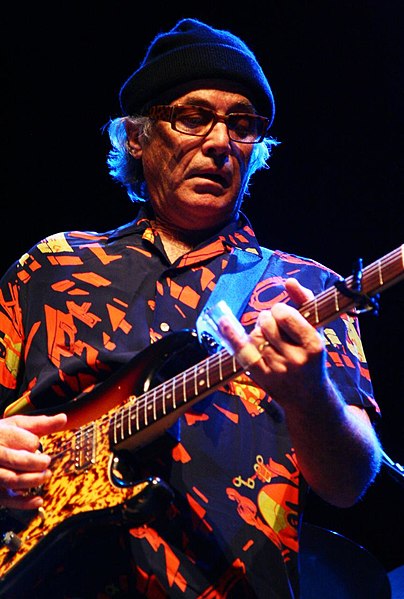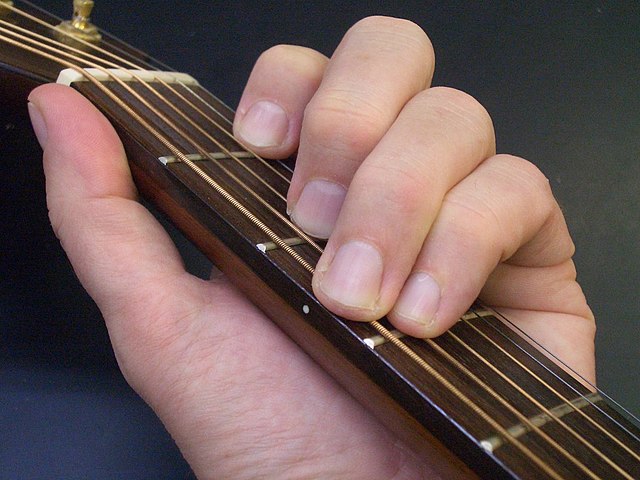In music, a guitar chord is a set of notes played on a guitar. A chord's notes are often played simultaneously, but they can be played sequentially in an arpeggio. The implementation of guitar chords depends on the guitar tuning. Most guitars used in popular music have six strings with the "standard" tuning of the Spanish classical guitar, namely E–A–D–G–B–E' ; in standard tuning, the intervals present among adjacent strings are perfect fourths except for the major third (G,B). Standard tuning requires four chord-shapes for the major triads.
Ry Cooder plays slide guitar using an open tuning that allows major chords to be played by barring the strings anywhere along their length.
The Who's Peter Townshend often used a theatrical "windmill" strum to play "power chords"—a root, fifth, and octave.
Paul McCartney used an A-major I–IV–V7 chord progression in "3 Legs", which is also an example of the twelve-bar blues.
Johnny Marr is known for providing harmony by playing arpeggiated chords.
In music, a chord is a group of three or more notes played simultaneously, typically consisting of a root note, a third, and a fifth. Chords are the building blocks of harmony and form the harmonic foundation of a piece of music. They can be major, minor, diminished, augmented, or extended, depending on the intervals between the notes and their arrangement. Chords provide the harmonic support and coloration that accompany melodies and contribute to the overall sound and mood of a musical composition. For many practical and theoretical purposes, arpeggios and other types of broken chords may also be considered as chords in the right musical context.
Guitarist performing a C chord with G bass





